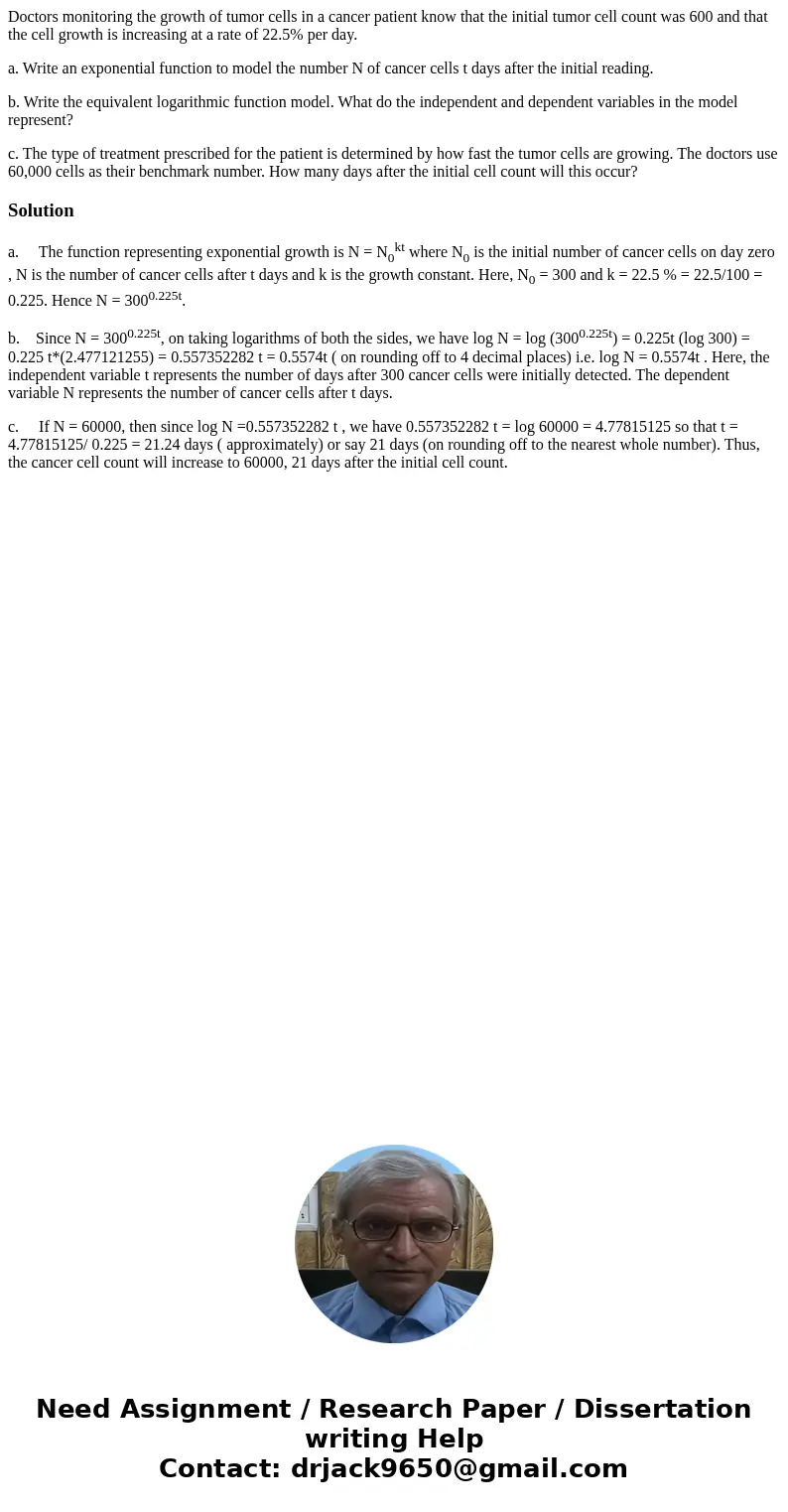Doctors monitoring the growth of tumor cells in a cancer pat
Doctors monitoring the growth of tumor cells in a cancer patient know that the initial tumor cell count was 600 and that the cell growth is increasing at a rate of 22.5% per day.
a. Write an exponential function to model the number N of cancer cells t days after the initial reading.
b. Write the equivalent logarithmic function model. What do the independent and dependent variables in the model represent?
c. The type of treatment prescribed for the patient is determined by how fast the tumor cells are growing. The doctors use 60,000 cells as their benchmark number. How many days after the initial cell count will this occur?
Solution
a. The function representing exponential growth is N = N0kt where N0 is the initial number of cancer cells on day zero , N is the number of cancer cells after t days and k is the growth constant. Here, N0 = 300 and k = 22.5 % = 22.5/100 = 0.225. Hence N = 3000.225t.
b. Since N = 3000.225t, on taking logarithms of both the sides, we have log N = log (3000.225t) = 0.225t (log 300) = 0.225 t*(2.477121255) = 0.557352282 t = 0.5574t ( on rounding off to 4 decimal places) i.e. log N = 0.5574t . Here, the independent variable t represents the number of days after 300 cancer cells were initially detected. The dependent variable N represents the number of cancer cells after t days.
c. If N = 60000, then since log N =0.557352282 t , we have 0.557352282 t = log 60000 = 4.77815125 so that t = 4.77815125/ 0.225 = 21.24 days ( approximately) or say 21 days (on rounding off to the nearest whole number). Thus, the cancer cell count will increase to 60000, 21 days after the initial cell count.

 Homework Sourse
Homework Sourse